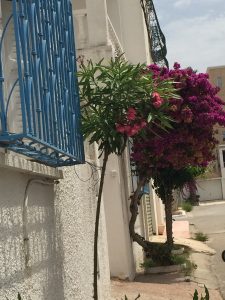Walid and Saida drive home the story of social & economic exclusion in #Tunisia
 Thanks to Carine Clert of the World Bank, there’s a good way to understand Tunisia’s situation six years after the Arab Spring.
Thanks to Carine Clert of the World Bank, there’s a good way to understand Tunisia’s situation six years after the Arab Spring.
Ms Clert, who looks at social protection and jobs in the Middle East and North Africa region for the World Bank, has written about Walid, 30, and his wife Saida, 28.
They have two small children, aged two and five. The family can no longer afford housing because Walid hasn’t had a job for two years. As a result, Walid, Saida and their children now live with Saida’s parents in Kairouan. Saida has a diploma that qualifies her to work in a kindergarten. Currently, she has a small day care business, which she would like to expand. Can she? Additionally, it would help if both Walid and Saida were able to acquire skills necessary to get the jobs available in Kairouan and the eponymous governorate.
Financing and training are the twin ladders that would enable this young couple to reach upwards and outwards and, perhaps one day, achieve their dreams. Is this likely?
Yes, says Ms Clert. She cites the World Bank-supported Moubadiroun project, which is awaiting ratification by the Tunisian parliament. It is specifically meant to help disadvantaged young people. It would, for instance, offer Saida support for her children’s child care as she tries to grow her business. She would also be able to get specific help with developing the business. Ms Clert says “beneficiary businesses will be granted bonuses on investments when they offer apprenticeship opportunities to targeted disadvantaged youth.”
That sounds like a fairly well-rounded approach to the conundrums of development. How to create a loop, helping one part of society help the other and drive growth and progress.
That is the way to give Tunisia’s hope and dreams space (and sustenance) to grow.

